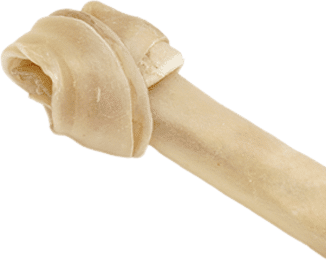


Popular culture has created conflicting narratives about the relationship between cats and dogs. Some movies and shows claim that these animals are mortal enemies, forever determined to be rivals. But then you see films and home videos where a dog and cat become best friends, cuddling and playing together without a care.
So what’s the truth? Despite the classic trope about cats and dogs hating each other, your pets could become best pals. Pet harmony is even more likely with a dog breed that’s good-natured around cats, such as the Labrador Retriever.
Generally speaking, Labrador Retrievers are friendly and have a great temperament. And that naturally makes them more likely to behave well around cats, even forming a close bond.
But to support a friendly environment, pet owners must carefully plan their new animal’s entry into the home. While you cannot force a relationship between your two pets, you should prepare for a smooth introduction process and increase their chances of warming up to each other and even becoming best buds.
If you’re not sure how to do this, we can help. We have excellent tips for introducing a Labrador Retriever to a cat, maintaining your pets’ personal space, and setting expectations for cohabitation.
Adding a new fluffy friend into the household can be stressful for pet owners. You want to keep the peace, but you know that a new dog (or a cat) will be confusing for your pet.
You’ll need to show your pets that you respect them by carefully selecting a potential playmate that does not typically act aggressively toward the other species. Failing to prepare adequately for this pairing could be disastrous and cause high-stress levels or destructive behaviors within your home.
If you already own a cat, consider their age and overall personality before bringing home a dog. An older cat who has lived alone for most of its life may not adapt to a new dog friend. Sometimes, they will even be upset if you add a new feline into the mix.
If your adult cat has this personality type, you might not want to bring an additional pet home.
If your cat is young, friendly to other pets, or has had a positive experience with canines in the past, they are likely to tolerate cohabitation with a dog.
However, you’ll want to pick a new puppy pal from dog breeds proven to be good with cats. Choosing a friendly dog breed will increase the chances that your pets will behave well together.
Alternatively, if you own an adult dog and want to adopt a cat, you’ll need to consider your dog’s temperament and personality. Pups who do not listen to your commands when running after a squirrel will likely chase cats. This will create a stressful environment for a feline, so chase-prone dogs should not be paired with cats.
If you’re struggling to determine how your dog will respond to a cat, ask yourself, “Does my dog get along well with new people and children?” Dogs who exhibit aggressive traits like baring their teeth or growling at strangers and children could be threatening to a cat.
As of 2021, the American Kennel Club rated Labrador Retrievers as the most popular dog breed. Labradors are well-known for their sweet and gentle personality — these dogs love making new friends and get along fabulously with other animals.
But not all Lab puppies are the same. You might want to consider purchasing a Labrador Retriever from a reputable breeder to ensure your pup has the distinct friendly and kind traits their breed is known for.
When you adopt an animal from a shelter, you do not know the animal’s parental lineage or possible traumatic experiences around the other species.
If you want the best possible chance of your Labrador behaving well in a household with cats, look at the available White Labradors from Snowy Pines. These pups will enter your home with prior socialization with other dogs, animals, and humans, which will make the grand introduction easier for owners.
It would be best to keep your pets apart when your new addition arrives in your home. Whether it’s a new cat or Labrador puppy, the household pets will need to acclimate to each other’s smells before their first meeting.
Keep each pet within a separate room for the first three to four days before the first meeting. Try feeding your pets on opposite sides of a door so that your Lab and cat can smell each other.
Using your pets’ mealtime to introduce each other to a new scent may seem odd, but eating is an enjoyable activity that happens consistently every day. Our furry friends love eating! Pairing a new smell with an activity they won’t refuse (like eating) can promote positive associations between your pets before they even meet.
Additionally, you want to let your animals take turns roaming freely around the house. This activity allows both pets to smell each other before coming face to face.
If it’s your cat’s turn to rule the roost, be cautious when taking your Labrador out for potty breaks or a walk. You do not want your two animals to meet before they are ready.
At this time, you’ll want to make sure your dog will obey basic commands like “sit” and “stay” before meeting a cat. A pet owner needs to be in complete control of the meeting to prevent any chance of aggressive behavior.
Fortunately, Labrador Retrievers from Snowy Pines go through lifestyle training and will know the basic commands of sit, stay, yes, and no before coming home with you. Training your Lab helps them learn healthy behaviors and ensures they are more open to new relationships with other animals and new people.
At our facility, we also have potential Labrador owners complete the Perfect Puppy questionnaire. This helps us match you with a perfect dog for your family home. If you already own a cat or anticipate having a cat in the future, let us know so we can consider this factor while we match you with a Lab puppy.
Even the best of friends need their alone time, and our fluffy pals are no different. As their owner, you need to ensure that your pet has their own space where they can escape from the other animal’s company.
For cats, consider getting a cat tree that they can climb up and get away from your dog. Cats love high places where they can survey their surroundings, and a cat tower provides them a safe space to watch a dog from afar.
For dogs, their crate should be their sanctuary for alone time where they can take a nap or enjoy their favorite chew toy. Place the crate in a quiet, peaceful room and ensure your cat doesn’t take over the crate: this is your dog’s space.
First impressions are everything, especially when introducing your cat and dog. A bad first impression could cause fear in one of your pets, potentially damaging their relationship before it even starts.
To ensure a successful introduction between the new pair, you’ll want both pets to be at a safe distance from each other. Use a neutral area of the house, like the living room, for the first meeting. Bringing one pet into the other’s designated safe space will confuse your pets and disrupt their security within the home.
Cats won’t respond well to being confined and restrained, so make sure your feline friend can move freely. If they want to remove themselves from the meeting, allow them to do so without discipline.
However, Labrador Retrievers should be on a leash so that you are in control if anything goes awry. Do not use a retractable leash — not only are these leashes dangerous for dogs, but the line could also snap if your dog runs after the cat.
One of the worst things you could do is hold one of your pets during the first introduction. Cats and dogs need an escape route from the room if they become frightened. You could experience deep cat scratches or witness a vicious chase around the house if one of the pets, hops out of your arms during their first meeting.
You’ll want to give each animal lots of treats and praise after their first introduction. Cats tend to enjoy things like catnip, treats, or soft pets. Labs will prefer attention and treats as a reward for their positive behavior.
It would be best to observe your cat’s daily activities for the first few weeks after being introduced to a dog. A cat who stops interacting with family members, using its litter box, or eating and drinking may feel threatened by its canine sibling.
Continue the leashed introductions until both pets appear calm in each other’s presence. This can take a while, but if you want your pets to have a friendly relationship, it’s vital to wait until they are ready.
There is no specific timeframe for when cats and Labradors will begin to accept each other. You could do everything right and find that your pets simply don’t like each other.
If you find that your dog consistently lunges or growls at a cat while in the same room after repeated introductions, they will likely not behave favorably in a long-term arrangement.
Alternatively, if your cat continuously hisses or swats at a dog, these behaviors indicate they are stressed in your home environment. The pairing of these two animals will not work well in these situations.
Until you are confident that your pets can behave calmly around each other, don’t leave them unattended. All of your hard work with the pets will flush down the drain if they have a bad interaction outside of your presence.
By following the right steps at the beginning, the chances are that everything will go smoothly, and your pets will begin to warm up to the idea of accepting their new sibling. However, this process could take months, so be patient with your pets and remember to praise them after each meeting.
Contrary to what popular media suggests, cats and dogs can absolutely live peacefully under the same roof. As their owner, you’ll want to choose a calm dog breed or adopt a social cat to welcome into the family.
To encourage harmony in your home, closely monitor their interactions and designate safe spaces for each pet. That way, you’ll have a high chance of creating a positive relationship between the two.
If you’re hoping to find a Labrador Retriever who is likely to befriend a cat, consider one of Snowy Pines’ White Labrador puppies. Our puppies receive exclusive training sessions focused on socializing and understanding basic commands — qualities that will come in handy when introducing your pets.
At Snowy Pines, we’ll match you with a Lab puppy who will be a perfect fit for families with feline friends. Get in touch today to learn about our available puppies!